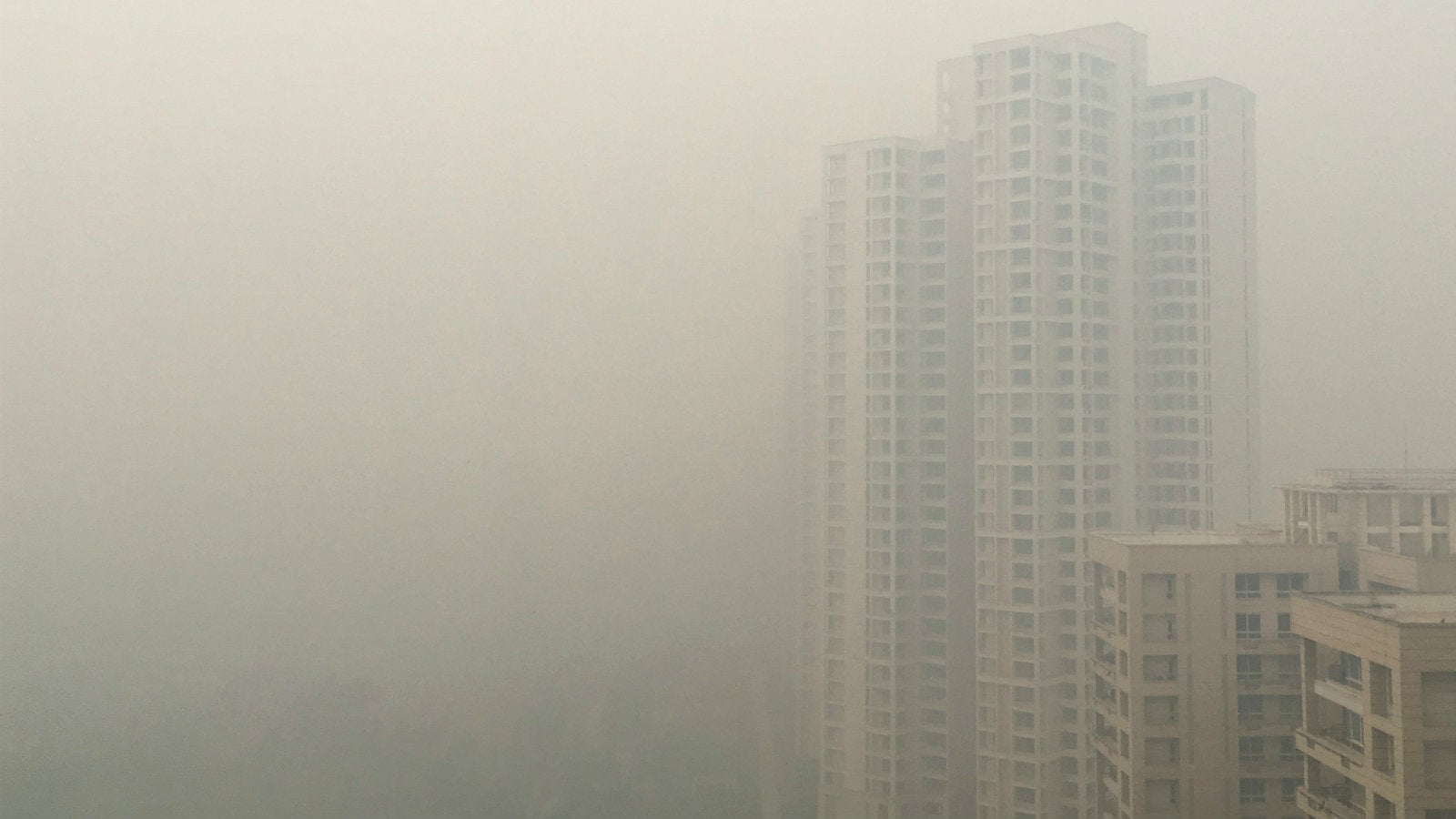Even before Diwali fireworks, Delhi’s air is already deadly
As India prepares to celebrate Diwali, its national capital is facing another bout of incredibly toxic air.


As India prepares to celebrate Diwali, its national capital is facing another bout of incredibly toxic air.
On Nov. 05, Delhi residents woke up to a haze of smog after the city’s pollution level reportedly hit 20 times the World Health Organization’s recommended limit. A dip in temperature and a change in wind direction contributed to the sudden spike, which arrived just a day before Indians are slated to begin celebrations for the festival of light. This festival is routinely marked by the bursting of firecrackers, which make air quality even worse every year.
Last month, India’s supreme court banned the sale of conventional firecrackers for Diwali in Delhi this year, allowing only “green firecrackers” that reportedly produce 30% less pollution. But the Hindustan Times newspaper found that traders are still clandestinely selling polluting firecrackers to customers, albeit at a higher price. In fact, growing support for a firecracker ban hasn’t stopped Indians from wanting to buy them.
This year, if emissions from just 50% of the toxic firecrackers used last year are added, Delhi can expect to see severely unhealthy air quality for at least two days (Nov. 08 and Nov. 09), according to the System of Air Quality and Weather Forecasting And Research (pdf). But without crackers, the city stands a chance of breathing just a little bit easier this Diwali.
Today (Nov. 06), Delhi’s air has recovered slightly, but it remains within the “severe” category, with most localities recording very unhealthy levels of PM2.5, or particulate matter with a diametre of less than 2.5 microns. Weather experts have warned that if firecrackers are burst over the coming days, the pollution levels will certainly spike once again, bringing the city closer to a repeat of the great smog of 2016, when pollution levels surged far beyond the safe limits a week after Diwali celebrations.
The sorry situation in Delhi has become an annual occurrence, worsened by the practice of crop residue burning in neighbouring states such as Punjab and Haryana. But besides geography, meteorological conditions also make Delhi’s pollution worse at this time of the year, with slow winds ensuring that it’s harder to disperse air pollution.
In this context, how residents celebrate Diwali this week matters more than ever.